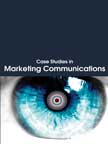Marketing Management
 |
Details
Textbook:
Pages : 500;
Paperback;
210 X 275 mm approx.
Workbook:
Pages :
282; Paperback;
210 X 275 mm approx, Sample Applied Theory Questions
Pricing
Textbook Price: Rs. 900;
Workbook Price: Rs. 700;
Available only in INDIA
Buy Now
Please allow 5 to 10 days for delivery.
Detail Table of Contents
Market Segmentation and Market Targeting : Chapter 8
SUMMARY:
Market segmentation is one of the most important strategic decision-making tools. Segmenting the market helps marketers to effectively cater to the needs of a particular group because their needs and wants will be homogeneous. There are different levels of segmentation. They are segment marketing, niche marketing, individual marketing, and local marketing.
|
|
on demographic attributes such as age, gender, income, occupation, religion, race, nationality, social class, family size, family life cycle, etc. In psychographic segmentation, variables to segment the consumer markets are lifestyle, personality, values and beliefs. Various variables for segmenting the market on the basis of the purchase behavior of customers are occasions, benefits, user status, usage rate, loyalty, etc.
Organizational markets can be segmented on the basis of demographics, operating variables, purchasing approaches, situational factors, and personal characteristics.
When segmenting markets, organizations need to ensure that the segmentation variables are effective in segmenting the variables. Segmentation variables should be measurable, differentiable, actionable, substantial, accessible, and actionable to make the segmentation effective.
After effective segmentation, a marketer has to focus on targeting that chosen segment with marketing strategies that will be most suitable to the segment. Strategies such as selective specialization, market specialization, and product specialization will help a marketer analyze his capabilities to fulfil the needs of the market.



